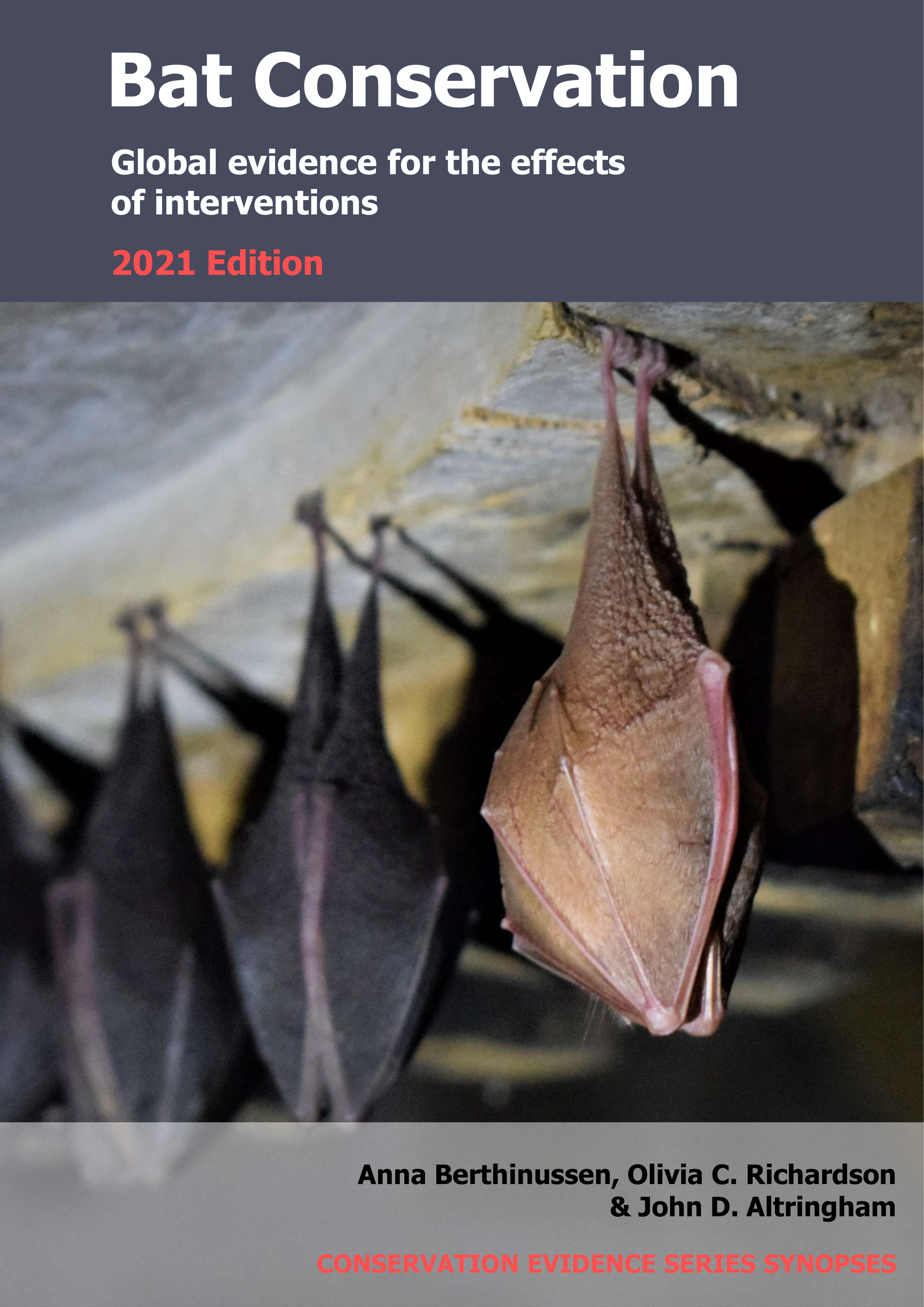Exclude bats from roosts during building work
-
Overall effectiveness category Unknown effectiveness (limited evidence)
-
Number of studies: 1
View assessment score
Hide assessment score
How is the evidence assessed?
-
Effectiveness
45% -
Certainty
23% -
Harms
17%
Study locations
Supporting evidence from individual studies
A replicated, before-and-after study in 2012–2013 of five buildings across England, UK (Stone et al 2015) found that excluding bats from roosts within buildings resulted in no difference in roost switching frequency, core foraging areas or foraging preferences of soprano pipistrelle Pipistrellus pygmaeus colonies. All five bat colonies established in alternative roosts within three days of exclusion in other buildings within 1.5 km of the original roost. Bats switched roosts at a similar frequency before (average every 2.1 days) and after exclusion (average 2 days). Bats also foraged in similar sized core areas (before: average 44 ha; after: average 47 ha), travelled similar distances to foraging sites (before: average 1.5 km, after: average 1.5 km), and had the same foraging habitat preferences (data reported as statistical model results) before and after exclusion. Exclusion experiments were carried out in the spring of 2012 and 2013. Temporary one-way exclusion measures were installed at roost exits. The five sites had 150–300 bats present before exclusion, and four sites were known maternity roosts. Bats were radio-tracked for up to 4 h after sunset for 4–7 days before and after exclusion.
Study and other actions tested
Where has this evidence come from?
List of journals searched by synopsis
All the journals searched for all synopses
This Action forms part of the Action Synopsis:
Bat Conservation
Bat Conservation - Published 2021
Update 2020





)_2023.JPG)














